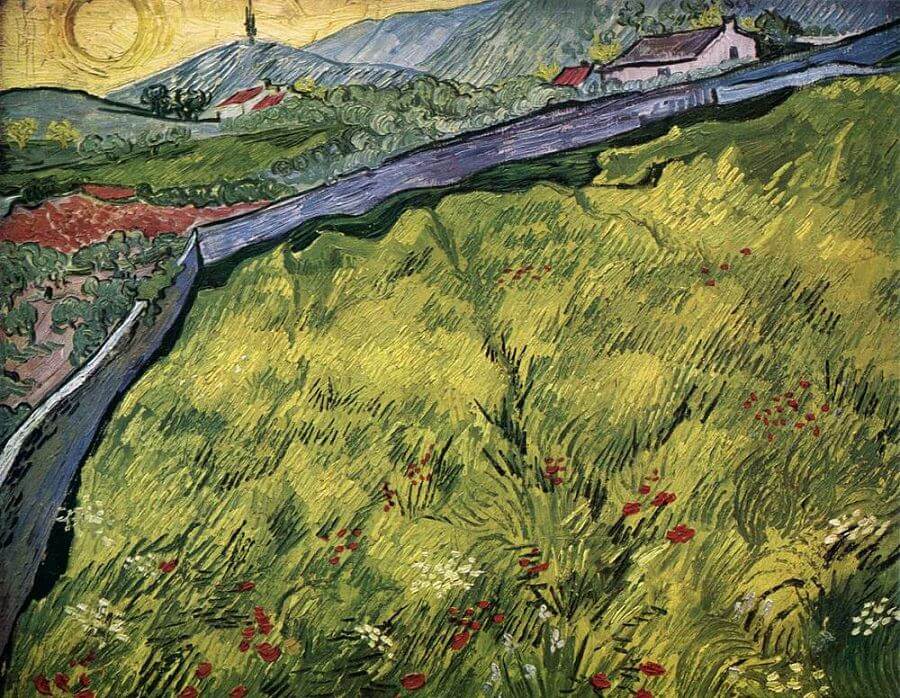The Green Wheat Field Behind the Asylum, 1889 by Vincent van Gogh

Van Gogh was quite aware of his problems, and disarmingly frank when talking about his madness, which he had come to consider an illness. He realized that he was incapable of functioning on his own and was unable to cope with the day-to-day necessities of life. On the advice of his friend the Reverend Salles he entered the asylum at Saint-Remy voluntarily, which was not far from Arles. During the course of the nineteenth century in France there had been a gradual improvement in the treatment of patients in mental asylums, with groundbreaking laws introduced in June 1838 to establish institutions across France and to regulate and reform conditions for the mentally insane. Though this was the case, asylums, and particularly those in rural or remote areas, were still bare, sparse and poorly equipped.
Van Gogh immediately started to paint again. His painting had been the mainstay of his adult life and was a vehicle for his self-expression, but increasingly it became his life and his therapy. Paintings such as this were mode looking through the barred window of his room, and show his use of heavy outline and simplified form.




















